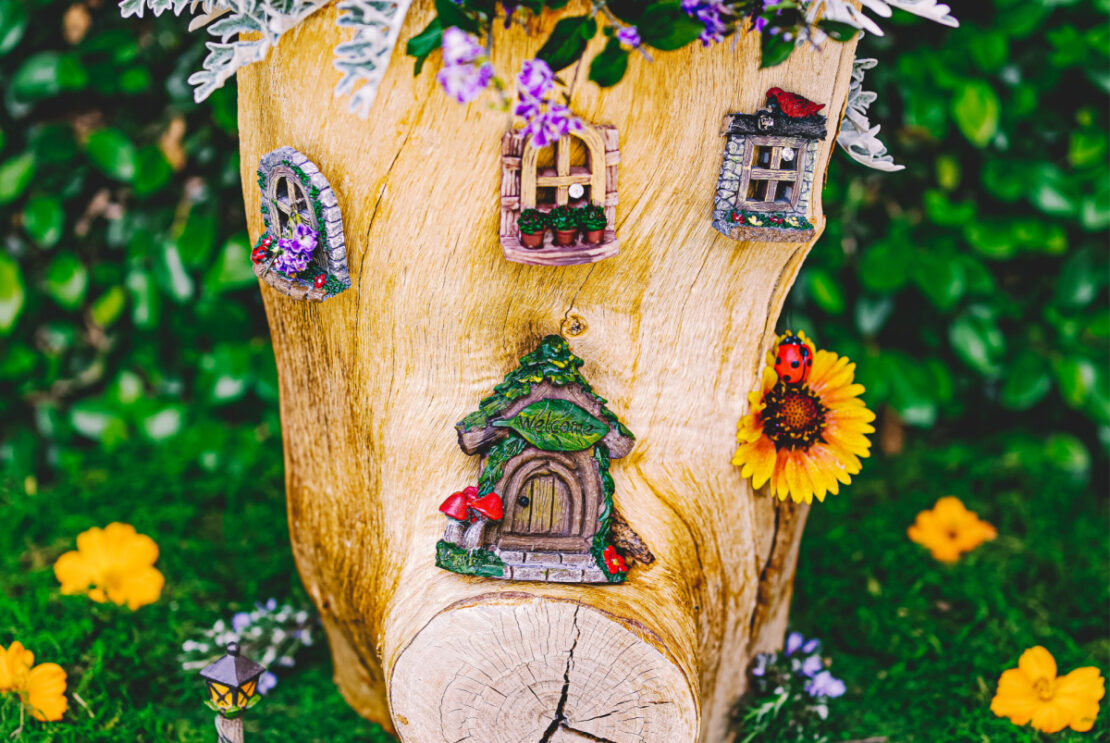
How To Make A Kid’s Fairy Garden With Foraged Materials
Raise your hand if you want to live in a tiny mushroom house in a magical forest (ME)! Surrounded by regal trees, waking up to dewy moss, serenaded by nature’s creatures…ah, the stuff fairytales are made of. According to my five-year-old, building a fairy house brings fairies to your house. Naturally, with that profound logic, we had to try. This age is just perfect for a project like this. Curiosity and wonder mixed with a big imagination make for a fun adventure—an adventure of foraging and learning the world of plants together. In this post, I’ll share how we created a fairy garden with found materials and a dash of store-bought extras.
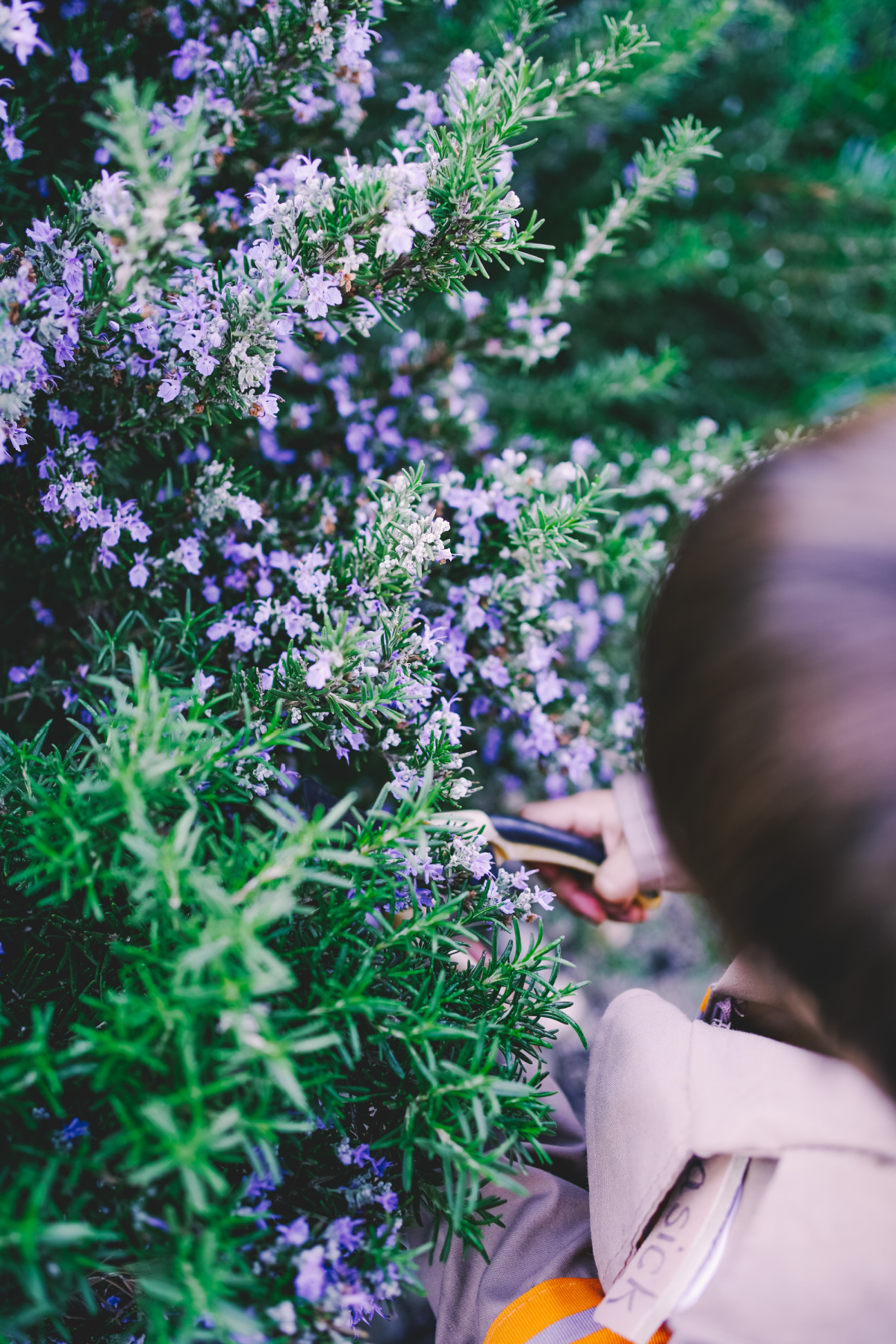
Suburban Foraging and Connecting To Nature
Living in a suburban neighborhood, there isn’t much opportunity to really surround and immerse ourselves in nature. Sure, we have some tree-lined streets, cute and tidy gardens, and parks nearby, but it’s no walk in the woods. Being conscious of that, finding ways to bring a little bit of plant magic into a child’s life is so beneficial. Connecting and understanding the growing things around us early on in my son’s life will help foster his appreciation for nature. Additionally, studies show time spent outside enhances a child’s socio-cognitive development (Putra et al., 2020). Coupled with a project that involves scavenging and identifying various found materials, you’ve got yourself a stimulating, educational, and fun activity!
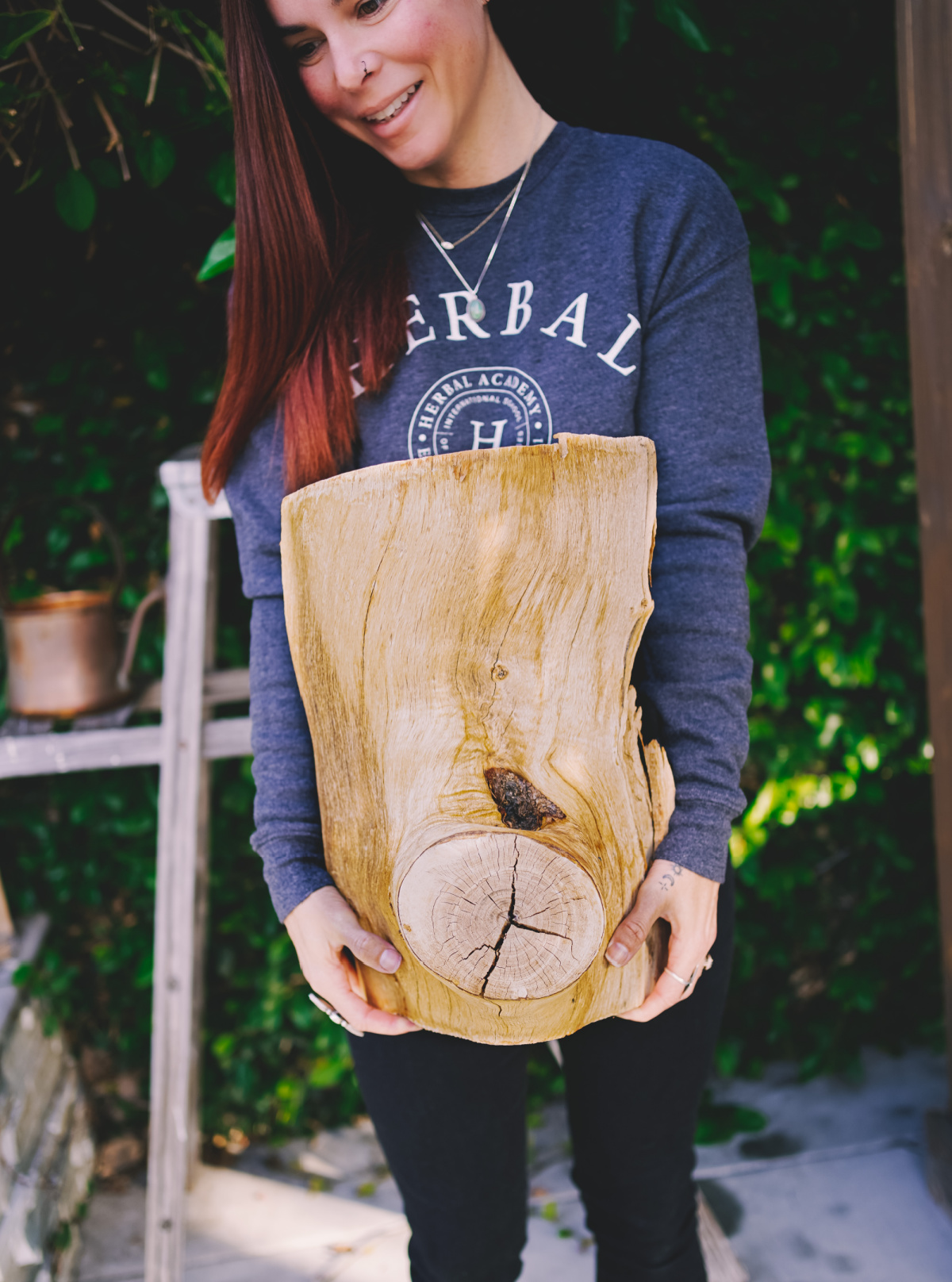
All About the Base
It all starts with the perfect stump. The foundation of a home is so important and this is equally true when building your own fairy garden. This was the most important task for my son and me. We spent months searching (again, suburban living problems). The search in itself was exciting. He and I would drive past tree trimmers and yell, “DO YOU THINK THEY’LL GIVE US A STUMP?” We would walk our neighborhood streets on the hunt. It was so cute to see his eyes wide, hoping to hit gold.
Eventually, we found one neighbor, believe it or not, who had several big pieces of a tree trunk that was cut down. We squealed in excitement, got our wagon, and skipped along the way. As I rolled a giant stump down the front yard, I laughed and thought that these moments of making memories together are priceless. Sadly, once we wheeled the newfound stump home, we quickly realized it was just too big for our fairy garden project. We were stumped on how we would get the perfect base until a friend of mine posted a video from her vacation home. There, in all its glory, was the perfect stump! Never in a million years did she think she would receive a message from me asking if she could bring a tree stump home, but she did, and it was exactly what we needed!
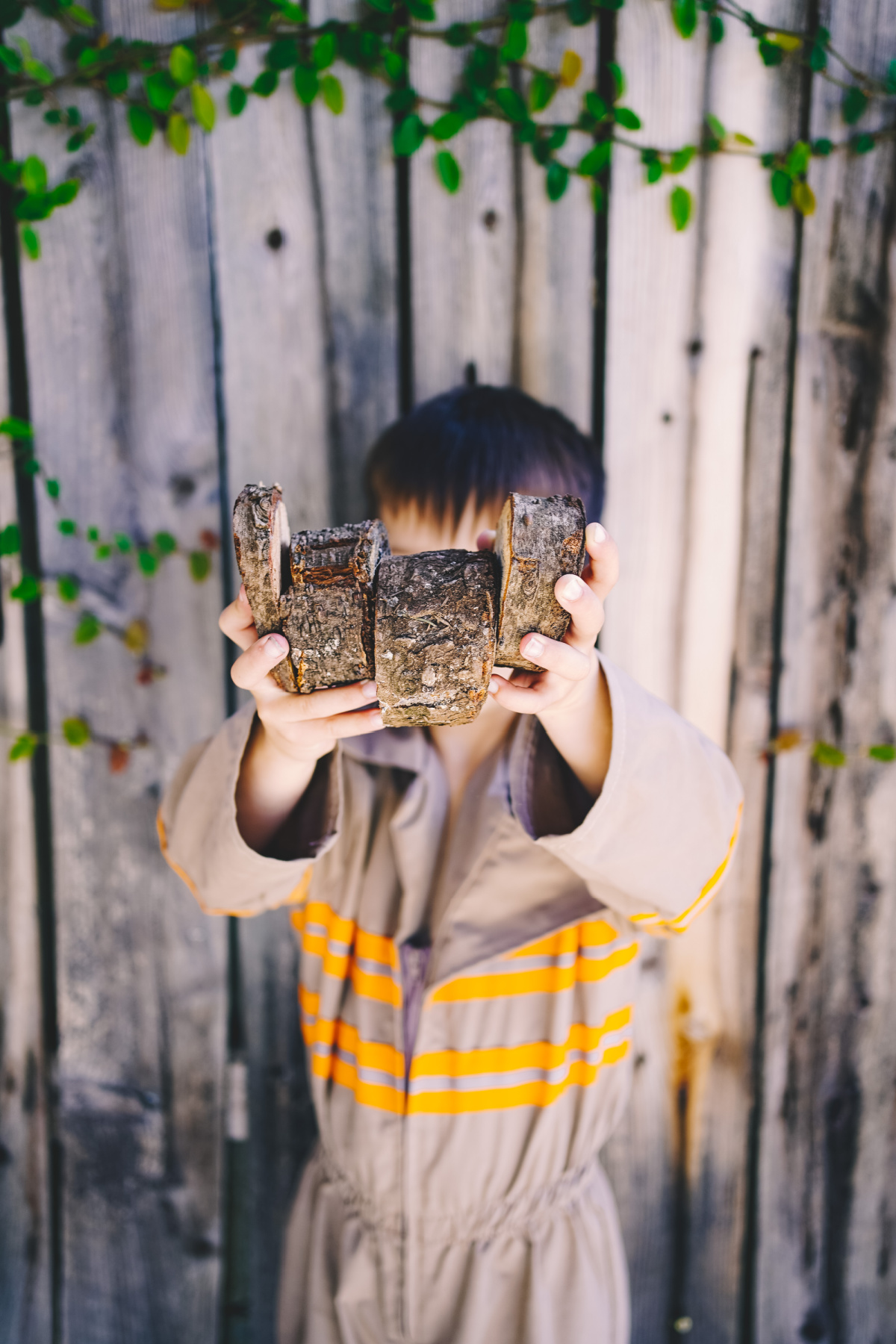
Scavenging For Materials
Next up was foraging for other materials to really bring our fairy garden to life. We hopped on bikes, grabbed a basket, shears, and were on our way (ghostbusters costumes for foraging, optional!). From our own garden, we trimmed a few things for the roof of the fairy garden. My kiddo now can identify dusty miller (Senecio cineraria) and it makes me smile every time. Our neighbor has a beautiful, giant rosemary (Salvia rosmarinus, formerly Rosmarinus officinalis) bush, so we rode over there and grabbed a few sprigs. Circling the block, we collected and identified golden dewdrop (Duranta erecta), cosmos (Cosmos sulphureus), and blanket flowers (Gaillardia pulchella). We also learned a very, VERY important lesson about fire stick (Euphorbia tirucalli) and how not every plant is safe to forage.
Earlier in December, at a Christmas tree lot, there sat a barrel full of gold. Discarded trunk slices! They were rustic, aromatic, and the perfect size. We grabbed a few and saved them to use as the perfect stepping stones to lead into the fairy house.
That night, we sat together and searched online, looking for the perfect door. We hit the stores instead—urban foraging we call it. There, at an unlikely location sat the perfect door, adorned with mushrooms and a welcome sign. We grabbed it along with a few other accessories at the Dollar Store. Our last stop was Hobby Lobby for moss, and then we were ready to put it all together!
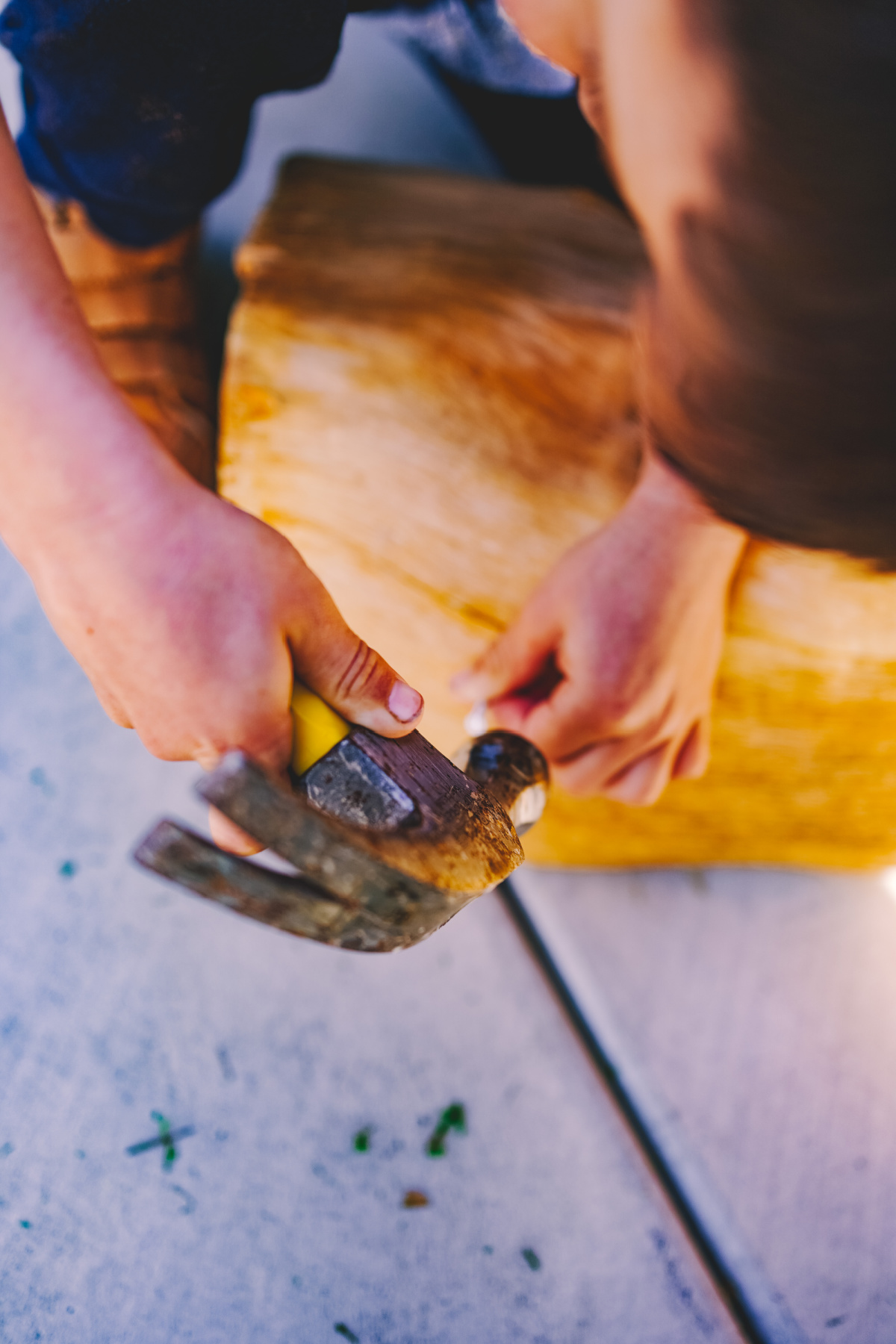
Building The Fairy Garden
Another wonderful thing about creating this fairy garden using found materials with your kid is incorporating some easy life skills. With my supervision, my son grabbed his favorite hammer out of the garage and got to work securing a few nails to the stump so that we could hang our windows. This was an excellent exercise for hand-eye coordination. As we sprinkled the preserved moss all around, we talked about all the wonderful things found beneath our feet. We had the opportunity to discuss where moss comes from and the type of ecosystem that is needed to grow it. As we strategically placed our decorative ladybugs, we remembered the time that we released a whole jar full of ladybugs in our garden and how important they can be to help keep plants healthy.
Once the final piece was placed, we both stood back and said, ”How cute!” It really did bring a magical vibe to our garden. The recycled Christmas tree trunk slices that created a pathway to the preserved moss, to the found stump, to the garden clippings, and most importantly, to the door of hope, created the way a fairy will find to make a home in our very front yard.
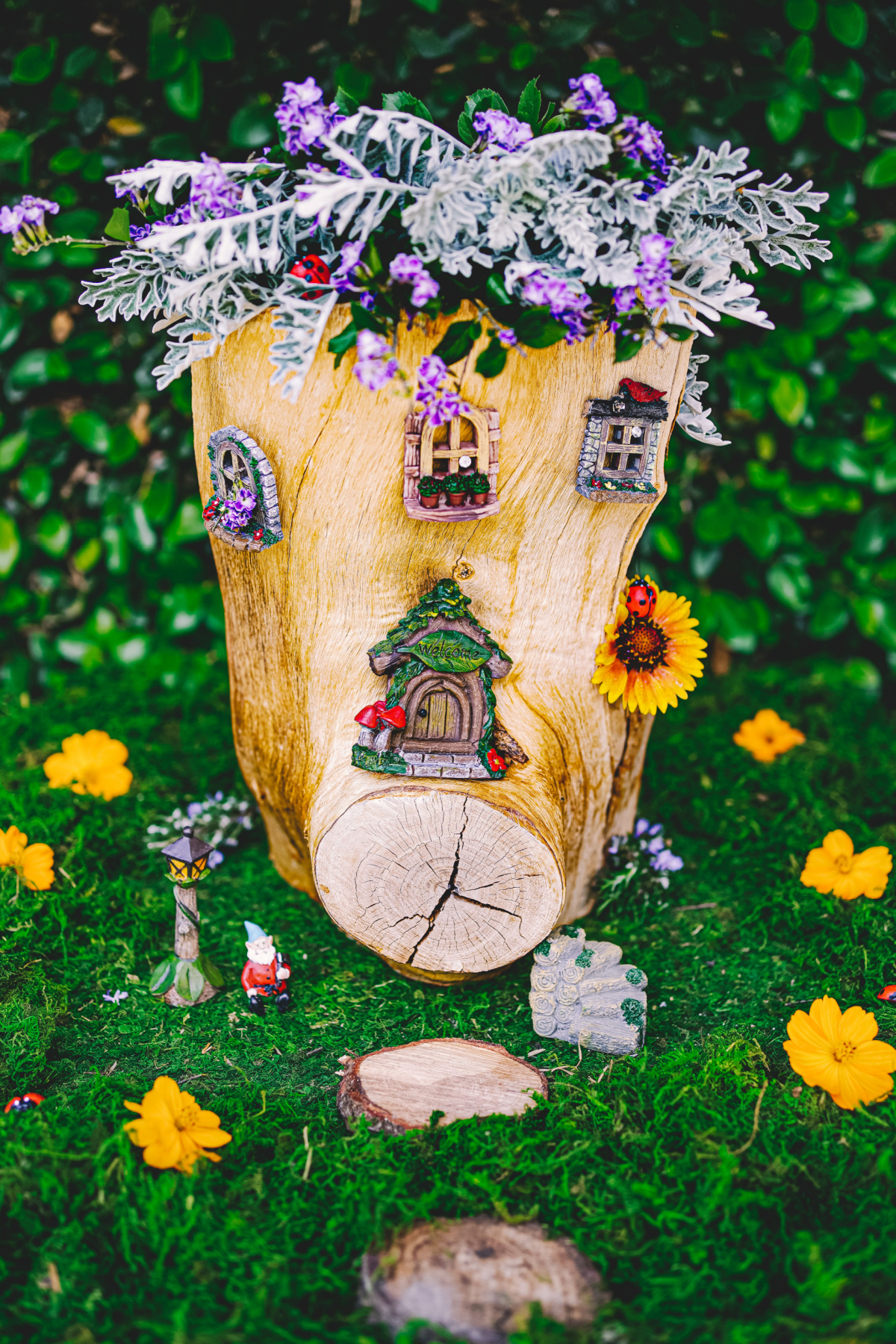
How to Create a Fairy Garden Using Found Materials
Tree stumpFairy Garden With Foraged Materials
A recipe filled with tips, wonder, quality time, and a beneficial activity to connect to nature.
Garden clippings
Tree trunk or branch slices (flat stones, pebbles, or shells could be another option)
Preserved moss
Flowers
Fairy garden door
Fairy garden windows
Nail and hammer
In Closing,
This project had so many learning elements and fun memories attached to it. I am so happy to share those with my son. Coming soon, we eagerly wait for the kid’s summer herbalism program through Herbal Academy. I can’t wait to continue to share the world of plants with my little one. Stay tuned!
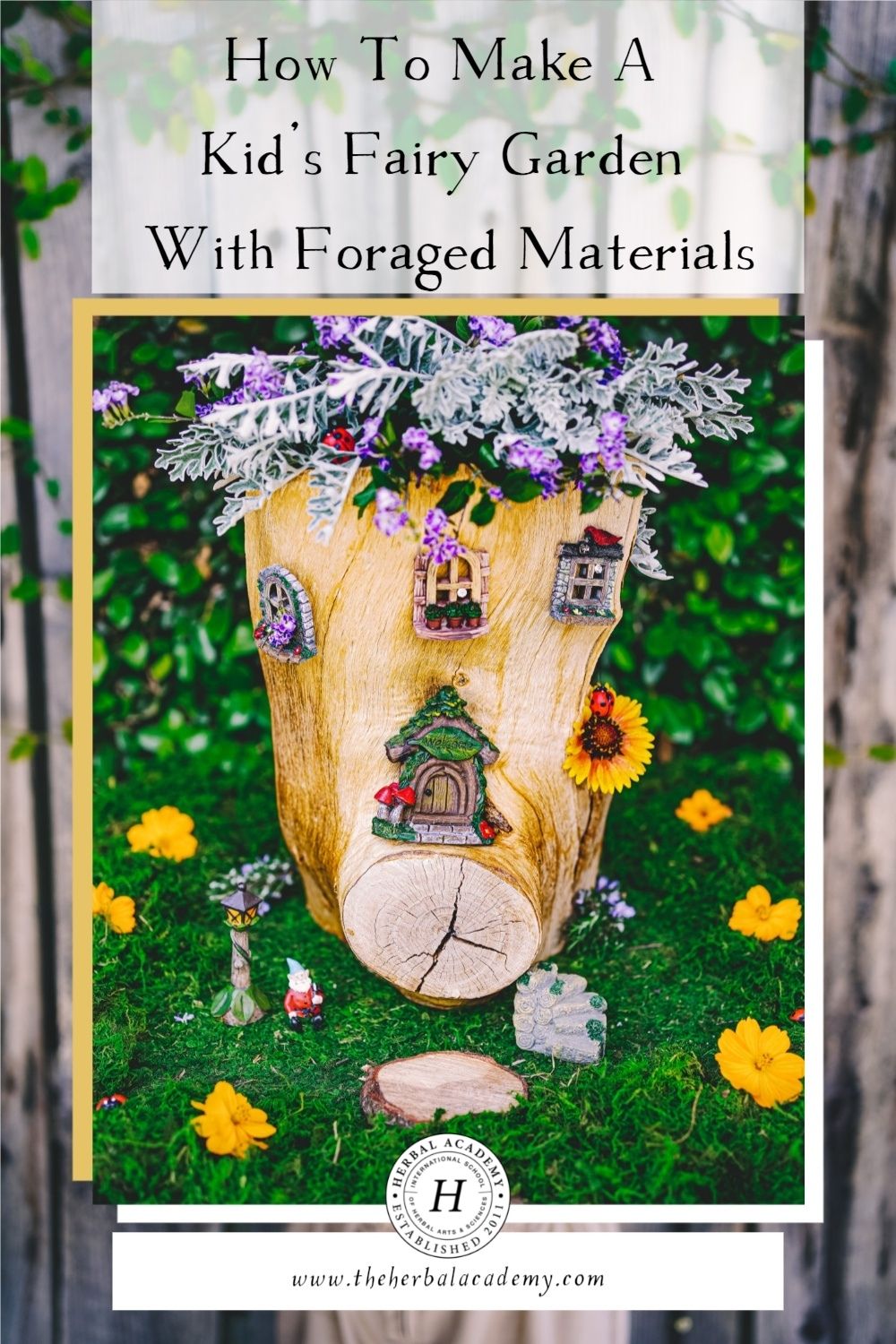
REFERENCES
Putra, I.G.N.E., Astell-Burt, T., Cliff, D.P., Vella, S.A., John, E.E., & Feng, X. (2020). The relationship between green space and prosocial behaviour among children and adolescents: A systematic review. Frontiers in Psychology, 11. https://doi.org/10.3389/fpsyg.2020.00859








